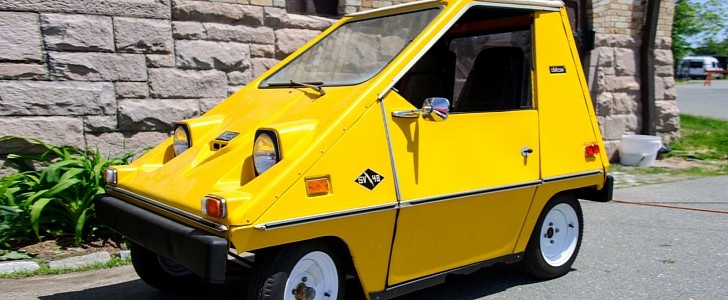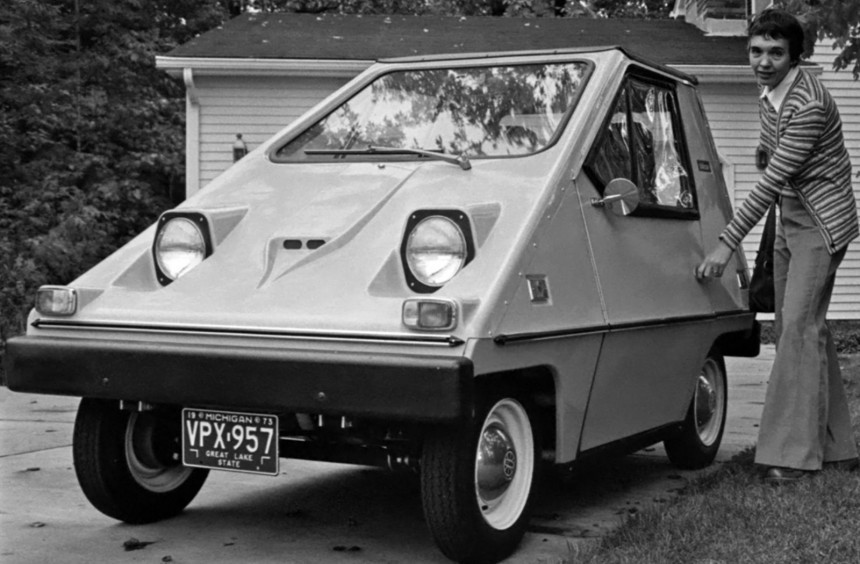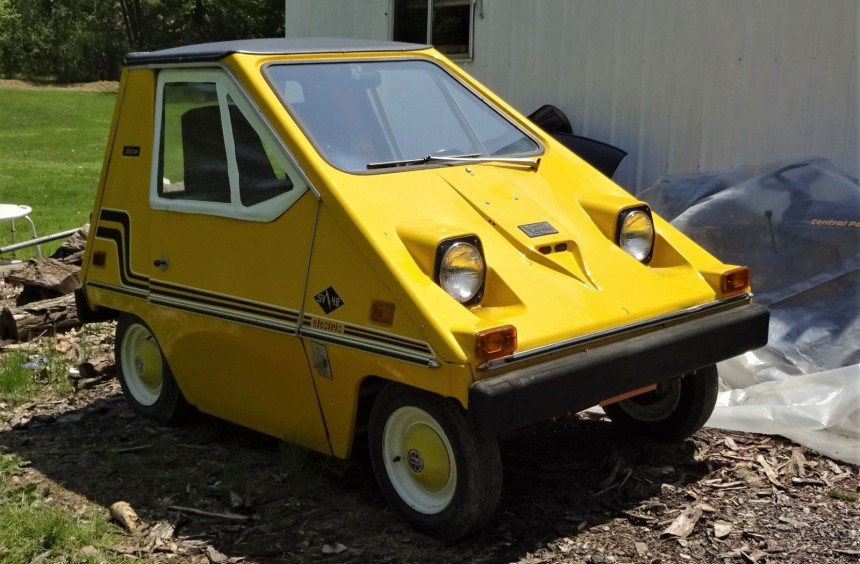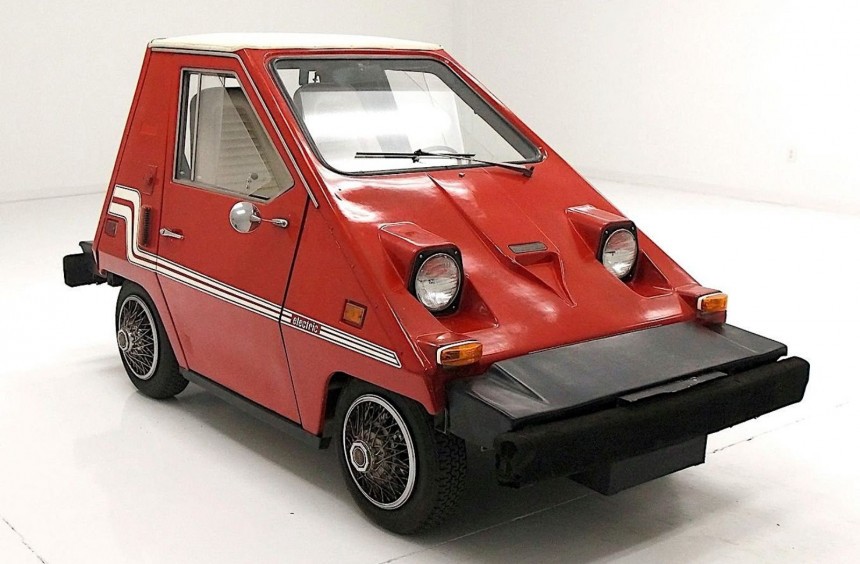In 1973, the ICE-reliant auto industry in the U.S. was hit by the first oil crisis of the decade. With fuel shortages all across the nation, carmakers were forced to quickly improvise, and the era of ugly and underpowered American cars began. Undoubtedly the ugliest and most underpowered of them all, the CitiCar overcame all odds and for nearly a decade, brought EVs back into the mainstream.
While Detroit’s Big Three were scrambling to develop fuel-efficient vehicles to cope with the 1973 oil crisis, smaller manufacturers were attempting to bring back electric vehicles. The most successful was Sebring-Vanguard, a Florida-based company founded by Bob Beaumont, a former Chrysler dealership owner from upstate New York.
After selling his business and briefly working with small companies that converted regular cars to electric power, he moved to Florida, the state with the most golf courses in the country. What does that have to do with EVs, you ask? Well, Beaumont based his first three all-electric prototypes on a golf cart.
This project eventually gave birth to the road-legal CitiCar unveiled at the 1974 Electric Vehicle Symposium in Washington, D.C. Envisioned as the perfect solution for the ongoing crisis, it gave Americans a small and cheap urban commuter. Unlike today’s EVs, it was never intended to replace regular cars, but rather help owners save fuel on weekdays.
Described as a coupe, the early version of this cheese wedge-shaped microcar was called SV-36. Power came from a 2.5 hp (1.9 kW) General Electric motor and a 36V battery pack that contained 6 individual lead-acid batteries.
No more than 8 feet (2.4 meters) long, the two-seater weighed 1,303 lbs. (591 kg), had an all-aluminum chassis, and its bodywork was made entirely out of impact-resistant cycolac – a fancy way of saying hardened plastic.
According to the manufacturer, it could reach a top speed of 25 to 28 mph (40 to 45 kph), depending on various factors like outside temperature or tire pressure. I wonder how many were sold in San Francisco and how fast it could go uphill. Range stood around 40 miles (65 km) and its battery pack could be fully charged from a conventional wall socket in about 8 hours.
With a price tag of $2,700 ($14,951 today), it was fairly cheap, but sales weren’t encouraging so it got an extensive upgrade several months after its release.
Codenamed SV-48, the revamped variant had a larger 48V battery pack that was comprised of 8 batteries. Although that didn’t noticeably improve range, it did increase the power to 3.5 hp (2.6 kW) as well as the CitiCar’s top speed which now stood at a respectable 34–38 mph (55–61 kph).
People began to buy these things and by 1976 Sebring-Vanguard was the sixth best-selling American manufacturer. The company stood behind GM, Ford, Chrysler, AMC, or the Checker Motors Corporation and ahead of Excalibur and Avanti Motors.
That year, the CitiCar got a third and final upgrade and the new version released mid-model year became known as the Transitional. The drivetrain arrangement was slightly altered for added safety, and power rose to 6 hp (4.5 kW). Bodywork upgrades included heater inlet vents on the side of the vehicle or full doors with sliding windows and better latches. Additionally, the rear window now opened like a hatch for easier access to the 12-cu ft (340-liter) storage compartment.
Production continued until 1977 with about 2,300 units being built at the Sebring-Vanguard facility in Florida. Later that year, Beaumont sold most of the assets to Frank Flower who formed a new company called Commuter Vehicles, Inc. The latter continued to build the tiny EV between 1979 and 1982 under the Comuta-Car nameplate. Nearly identical to the Transitional CitiCar, the rebranded model featured minor modifications required by the evolving federal safety requirements, such as gargantuan bumpers extensions.
An extended-wheelbase utilitarian version was also produced. Called Comuta-Van, it came with a 12 hp (8.9 kW) motor, 72V battery pack, and 3-speed transmission. A slightly modified model of this microvan was commissioned by the U.S. Postal Service. It was right-hand-driven and featured sliding doors. It is estimated that about 2,150 cars and vans were built during the Commuter Vehicles era.
Yes, it was ugly and underpowered, but the CitiCar was a successful EV built by a start-up that came out of nowhere, back when Elon Musk was three years old. It was the best-selling electric car manufactured on American soil between 1945 and 2013, beating the Tesla Roadster by nearly 2,000 units.
Thanks to the folks at British Movietone who dug deep into the Associated Press archives, you can watch an original 1974 video promoting the CitiCar below.
After selling his business and briefly working with small companies that converted regular cars to electric power, he moved to Florida, the state with the most golf courses in the country. What does that have to do with EVs, you ask? Well, Beaumont based his first three all-electric prototypes on a golf cart.
This project eventually gave birth to the road-legal CitiCar unveiled at the 1974 Electric Vehicle Symposium in Washington, D.C. Envisioned as the perfect solution for the ongoing crisis, it gave Americans a small and cheap urban commuter. Unlike today’s EVs, it was never intended to replace regular cars, but rather help owners save fuel on weekdays.
Described as a coupe, the early version of this cheese wedge-shaped microcar was called SV-36. Power came from a 2.5 hp (1.9 kW) General Electric motor and a 36V battery pack that contained 6 individual lead-acid batteries.
According to the manufacturer, it could reach a top speed of 25 to 28 mph (40 to 45 kph), depending on various factors like outside temperature or tire pressure. I wonder how many were sold in San Francisco and how fast it could go uphill. Range stood around 40 miles (65 km) and its battery pack could be fully charged from a conventional wall socket in about 8 hours.
With a price tag of $2,700 ($14,951 today), it was fairly cheap, but sales weren’t encouraging so it got an extensive upgrade several months after its release.
Codenamed SV-48, the revamped variant had a larger 48V battery pack that was comprised of 8 batteries. Although that didn’t noticeably improve range, it did increase the power to 3.5 hp (2.6 kW) as well as the CitiCar’s top speed which now stood at a respectable 34–38 mph (55–61 kph).
That year, the CitiCar got a third and final upgrade and the new version released mid-model year became known as the Transitional. The drivetrain arrangement was slightly altered for added safety, and power rose to 6 hp (4.5 kW). Bodywork upgrades included heater inlet vents on the side of the vehicle or full doors with sliding windows and better latches. Additionally, the rear window now opened like a hatch for easier access to the 12-cu ft (340-liter) storage compartment.
Production continued until 1977 with about 2,300 units being built at the Sebring-Vanguard facility in Florida. Later that year, Beaumont sold most of the assets to Frank Flower who formed a new company called Commuter Vehicles, Inc. The latter continued to build the tiny EV between 1979 and 1982 under the Comuta-Car nameplate. Nearly identical to the Transitional CitiCar, the rebranded model featured minor modifications required by the evolving federal safety requirements, such as gargantuan bumpers extensions.
Yes, it was ugly and underpowered, but the CitiCar was a successful EV built by a start-up that came out of nowhere, back when Elon Musk was three years old. It was the best-selling electric car manufactured on American soil between 1945 and 2013, beating the Tesla Roadster by nearly 2,000 units.
Thanks to the folks at British Movietone who dug deep into the Associated Press archives, you can watch an original 1974 video promoting the CitiCar below.











